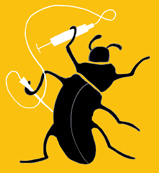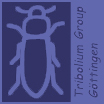RNAi is an emerging technology for eco-friendly and species-specific pest control. One of the challenges is the identification of the best RNAi target sequences, i.e. those that lead to the death of the target at minimal concentrations and with minimal side effects on other species. The difficulty in performing large-scale screens in pest species has limited the number of genes that have been tested in the past. One way to gain a comprehensive view is to use genetic model systems, which are more easily subjected to genome wide RNAi screens. However, it has remained an open question, in how far target genes identified in one species can be transferred to other species.

In order to identify the most efficient RNAi target genes, we performed a genome wide RNAi screen to identify the most efficient RNAi target genes in the red flour beetle Tribolium castaneum. We found that targeting conserved basic cellular processes, such as protein degradation and translation, is more effective than targeting the classic pesticide target processes. Further, we found some variability when transferring RNAi target genes to other pest species.Based on our work, we propose an efficient way to find very good target genes for pest control in other species.
Currently, we are working on optimizing the dsRNA target sequence in order to increase the efficacy of the treatment.

